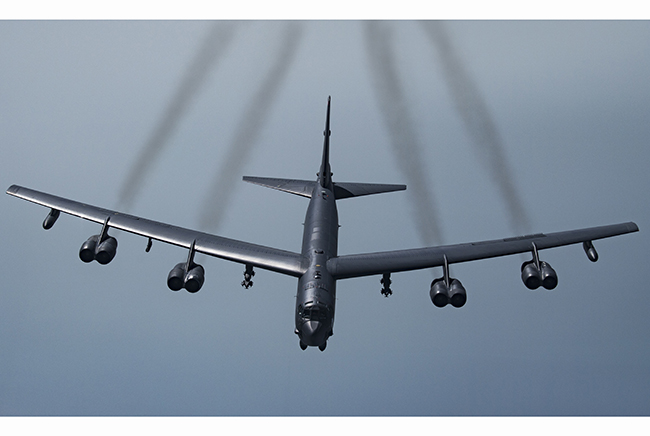
Deputy Assistant Defense Secretary for Nuclear Matters Peter Fanta said at a May 23, 2019, AFA Mitchell Institute event that the Air Force needs to look at platforms that can penetrate enemy air defenses or carry weapons that do when it prepares to replace the B-52H bomber. Air Force photo by SrA. Keifer Bowes.
The Air Force needs to look to new ways of penetrating enemy airspace as its idea of what should replace the B-52H Stratofortress takes shape, Peter Fanta, deputy assistant defense secretary for nuclear matters, said this week.
The B-52—a 1950s aircraft that is expected to fly for a century—hasn’t been able to penetrate enemy air defenses for the last 40 or 50 years, Fanta said at a May 23 AFA Mitchell Institute breakfast, so its replacement would need to regain that capability.
“Do you find something that just carries volume and you use the weapon to penetrate, or do you actually build another bomber to do the penetration?” he asked. “I would suggest that will be assessed as we go through the next round of threat assessments and look at how these threats are evolving.”
BUFFs are flown for conventional strategic attack, close air support, air interdiction, offensive counter-air and maritime operations, as well as long-range nuclear strike missions. It can carry 12 nuclear Air-Launched Cruise Missiles externally and eight ALCMs or nuclear gravity bombs internally. On the conventional side, B-52Hs wield the non-nuclear ALCM variant, the Joint Air-to-Surface Standoff Missile, Joint Direct Attack Munitions, and a range of other bombs, such as cluster bombs, sea mines, decoys, and jammers.
The Air Force is planning to start retiring the B-1 and B-2 in the early 2030s, leaving only the B-21 and B-52 as the middle of the century approaches. It also wants to grow from nine to 14 bomber squadrons by 2030.
Fanta bets the next bomber won’t look like the Stratofortress. The platform will be threatened by multistatic radars, integrated radar defenses, and fighter jet upgrades like artificial intelligence, he added.
To keep up with the pace of adversaries’ technology, he said, stop replacing the bombers every 30 to 100 years. Instead, iteratively improve systems through a series of block upgrades every seven to 15 years.
“It may look like something that you can put up with the volume and fly for a long distance with a lot of ordnance on it and then make the ordnance penetrate,” he said. “The question is, how fast is the technology replacing what we are currently seeing? How fast are the integrated air defenses being built by potential adversaries, and then how fast do we need the technology matured?”